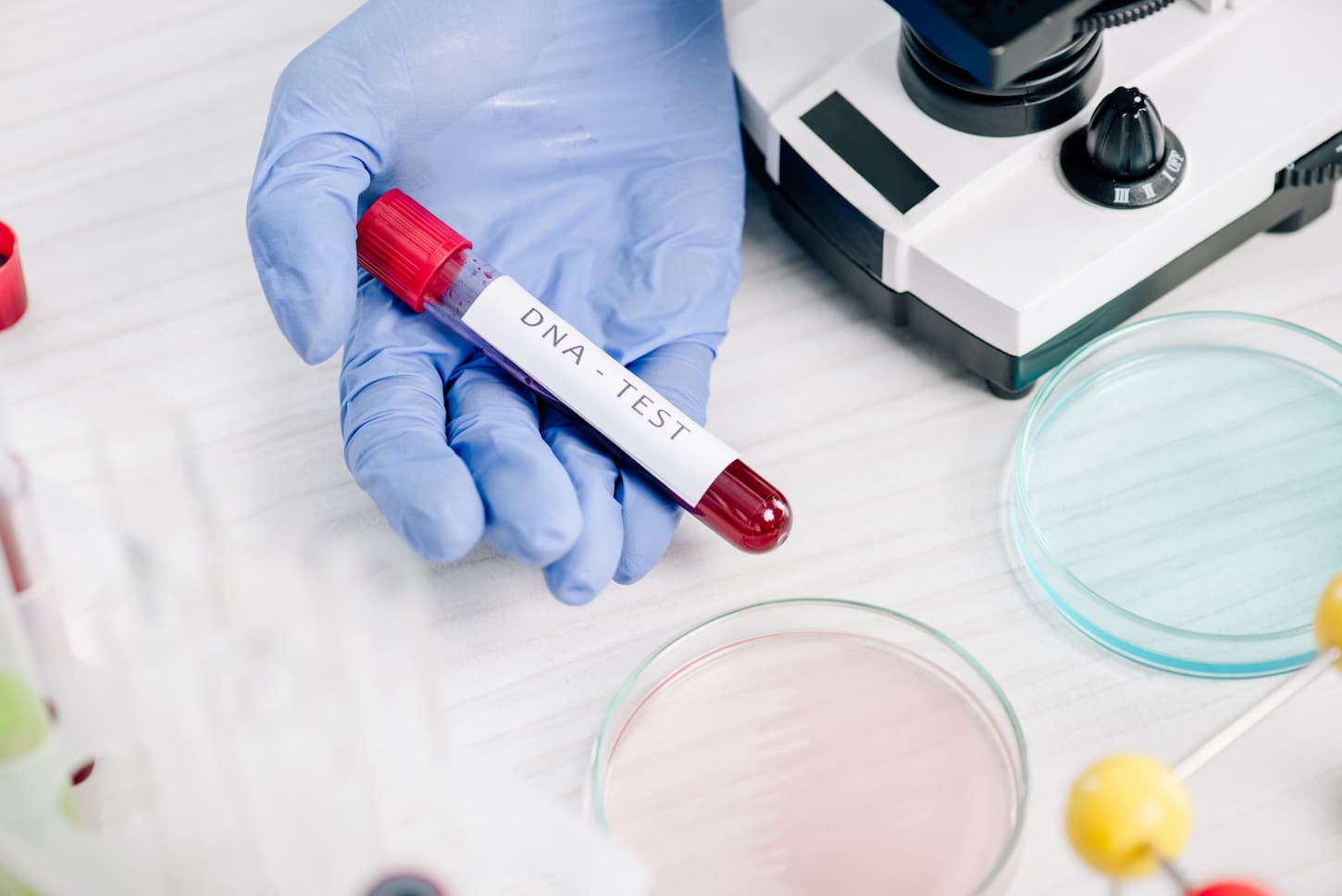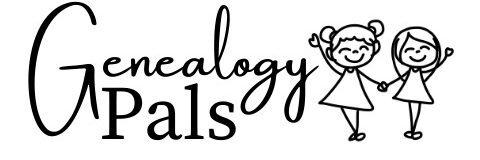Lately, Breanne and I have been studying more about DNA and genetic genealogy. We’re nurses, so we’re suckers for a good, scientific angle. But what exactly is genetic genealogy? And why is it so revolutionary and helpful?
Genetic genealogy uses DNA combined with other genealogical evidence to prove ancestral relationships. By combining DNA results with traditional genealogy research, individuals can learn more about both their genealogical and genetic family relationships.
In other words, genetic genealogy is opening doors worldwide for everyone. Keep reading and let’s go through some of them together.

Genetic Genealogy: What It Is
Genetic genealogy is one aspect of genealogy that looks at DNA results and comparisons in collaboration with other genealogical evidence. While not seen as definitive proof of family relationships, DNA is used as supporting evidence to collaborate with existing data and research.
Genetic genealogy is one part of genealogy – a branch of it if you will. 🙂 Sorry – the tree puns write themselves in genealogy. I’ll leaf off it now, I promise.
DNA and genetic genealogy are seen as “supporting evidence” rather than stand-alone proof, so they don’t prove anything by themselves. They are, however, helpful tools in your genealogy toolbelt or toolbox.
But when you use genetic genealogy with your paper trail of family tree research (using records like birth certificates, census records, etc), DNA can help support and substantiate your findings. It backs up what you’ve found.
And if you can’t find a paper trail for your DNA test to support?
Well, genetic genealogy and DNA can also help you discover new branches to your genetic family tree. Knowing more about your genetic family tree can help you find new family relationships and even living relatives who have also taken the same genealogy DNA tests as you. Finding new relatives to talk to should open up some more doors for you to find the paper trail that will help your research continue.
And that way, you’ll be back on the genealogical research trail before you know it.
By using all of our genealogy branches (of traditional paper-trail research and DNA results) together, you’re able to get more information on both your genetic family tree and your genealogical family tree.
And yes, that means we all have two different family trees – we all have them. We’ll go through it in the next section on genetic heritage.
What is Genetic Heritage?
Genetic heritage tells you specifically about your inherited DNA and ethnicity. In other words, it tells you what parts of the world your family came from, based on specific strands of your DNA.
In an ideal and perfect situation, you’d inherit 50% of your genes from your father and 50% of your genes from your mother. Therefore, your grandparents would each be responsible for 25% of your DNA. Your great-grandparents would have passed on 12.5%, and so on (with the number halving with each generation back).
However, real life is far from ideal. So sometimes you may get 45% of your DNA from one parent, 45% from another, and the last 10% is unique to you because of how your parents’ DNA merged into something new. Or maybe you got 60% from one parent and 40% from the other. There are countless variations. It’s crazy (but also kinda cool).
In any case, because of how genetic inheritance happens, your genetic family tree may look very different than your genealogical family tree (your traditional pedigree chart).
In your genetic family tree, you may not show any specific DNA similarities with several ancestors. That doesn’t mean you aren’t related – it just means you didn’t inherit their specific DNA.
This genetic inheritance and variation explain how people with strong family histories from one area (like their grandparents immigrated directly from Scotland) get wonky DNA tests that show they’re only 10% Scottish (source).
That doesn’t mean you are only 10% Scottish, though. That data simply means that your DNA mixed and matched in a unique way – and that you inherited more of your DNA from a different ancestor. You’re still very Scottish in your culture and family history.
Even so, go find out where the rest of your genetic or DNA genealogy is from – and follow that paper trail. Go see what you can find out and add it to your family pedigree! You may very well find some new branches of the family that were previously unknown.
Is Ancestral DNA Maternal or Paternal?
Ancestral DNA is both maternal and paternal: it comes from both the father’s line and the mother’s line. Even so, your ancestral DNA results will come from both lines – or just one, depending on which test you take.
But first, here’s a quick, mini-lesson in genetics. This is somewhat simplified because otherwise, this would be a giant book.
Humans normally have twenty-three (23) pairs of chromosomes. These chromosomes are what make up our DNA. Twenty-two (22) of the chromosomes are autosomes – and the 23rd one is our sex chromosome (determining our genetic and physical sexes).
Then, within our cells is an organelle called mitochondria. The mitochondria help create adenosine triphosphate (ATP) to supply chemical energy to the cell. Mitochondria has its own ribosomes and mitochondrial genes, which can also be tested for genetic genealogy. Mitochondrial DNA is inherited along a maternal line.
Okay, that’s the super-quick version of genetics. Here’s the takeaway – we have 3 sources of DNA that we can test and track:
- the 22 autosomal pairs
- the sex-linked chromosome
- mitochondrial DNA
Most commercial DNA tests (called DNA tests) look at the 22 autosomes. Of these 22 autosomes, half of each autosome pair (50%) comes from each parent. So your results will show matches from both of your biological parent’s families.
There are also Y-DNA and mitochondrial DNA (mitDNA) tests. These tests are strongly linked to the respective paternal and maternal lines.
- The Y-DNA tests follow the Y or male chromosomes, so it follows the paternal lineage.
- MitDNA tests follow the maternal line, as mitochondrial DNA is passed down along a direct maternal line.
| Type of Test | What it Tests | Who Can Take the Test | Possible Matches |
|---|---|---|---|
| atDNA tests | 22 Pairs of Autosomes | Anyone | Will be from both the maternal and paternal family lines. |
| Y-DNA | Y Chromosome | Males (anyone with a Y chromosome) | The direct paternal line (a man, his father, father’s father, father’s grandfather, etc) |
| MitDNA | DNA found in the mitochondria of cells | Anyone | The direct maternal line (your mom, her mother, her grandmother, etc) |
Can Genetic Genealogy Be Used to Solve Crimes?
Yes – genetic genealogy can be used to solve crimes. It’s been used in the past and the ethics of such use are currently being explored by experts.
The most famous case that’s been solved with genetic genealogy was the April 2018 Golden State Killer. The perpetrator’s DNA was collected from a rape kit and uploaded to GEDmatch.
GEDmatch is a third-party site where you can upload your DNA test results into a database to look for more matches. Because it’s an open-source, 3rd-party platform, there may be more results than if you’d only looked at results available on the database of where you had your testing done.
Using matches based on that database and the perpetrator’s own DNA, the investigators built a family tree. Then, using clues and collected evidence, the investigators were able to narrow down the tree to a single suspect (source – and list of other solved crimes via GEDmatch).
Law enforcement has also gotten help solving crimes with the genetic genealogy aspect from a company called Parabon NanoLabs. In 2018, CeCe Moore helped establish a division of the company specifically devoted to helping solve cold cases. They use the same methods that were used in solving the Golden State Killer case – and have helped solve 50+ cases to date.
The Ethics of Using Genetic Genealogy in Solving Crimes
Ever since 2018 and the solving of high-profile cases using genetic genealogy, there has been an ongoing (and understandably heated) discussion regarding the ethics involved.
Is it ethical to use unsuspecting people’s DNA results to solve crimes? Or are they providing a much-needed public service? These, and other hard questions, are being asked regularly by people and genealogists everywhere.
As a result, GEDmatch has updated its privacy policy. This whole topic and situation will continue to be debated – especially as new legislation is considered and passed.
But as of right now, it’s still a hot topic with no formal resolution.
Personally, we think it’s pretty cool that investigators are able to solve crimes with genealogy – but we understand that this is a huge privacy concern. So far, the only conclusion we’ve reached is a solid, “well, it’s complicated – and above our pay grade.”
What Does a Genetic Genealogist Do?
A genetic genealogist is a genealogist who uses DNA to enhance their research. Even so, there are different levels of genetic genealogists, which is totally awesome.
This is because using DNA to research family relationships has become so common that every professional genealogist needs to have at least a basic understanding of genetic genealogy.
At the more basic levels, they’ll still do genealogy research – following the research paper trail of our ancestors to fill out family trees. They’ll just also be familiar with the various DNA tests, actively searching those databases for information, and filling out genetic genealogy trees. An individual genealogist’s level of comfort and expertise with DNA will vary, hence the possibility for specialization.
Some genetic genealogists will take things to the next level as DNA specialists. This next level of specialty has a lot of technicalities involved. These genetic genealogists thoroughly understand biology, genetics, and how DNA is transferred from person to person.
They use that knowledge (combined with your test results) to analyze your DNA test results and relative matches. Then, they’ll use that evidence to help you learn more about your family relationships.
We’re grateful for these amazing people who are such fantastic resources for the rest of us!
Information on Genetic Genealogy Education, Requirements, and Jobs
There are no special certifications to become a genetic genealogist or DNA specialist beyond regular genealogist education and certifications. Becoming a specialist is done by continuing to keep up with advances in the field and being familiar with current best practices.
So in that sense, all genealogists are genetic genealogists to some extent. This is simply because DNA testing and results are such a prevalent part of genealogy today.
Even so, if you’re wanting to get a job as either a genetic genealogist or a DNA specialist, then you’ll want to get as much related education as possible and a genealogy certificate. You may also want an advanced degree in a related field.
You can read about the education requirements for genealogists here.
The big genealogy companies that hire specialists are companies like Ancestry, genealogical research firms, Parabon NanoLabs (the company we discussed earlier in this article), Legacy Tree Genealogists, and more.
Many of these companies prefer hiring genetic genealogists with a relevant degree and a genealogist certificate. For example, some DNA specialists and genetic genealogists will have degrees in genetics, biology, family history, or other areas of specialty.
One interview, given by a genetic genealogist, details his journey to become a genetic genealogist. He has a degree in genetics and a minor in family history – but wishes he had done it the other way around (source).
No matter what your goals are as a genetic genealogist, you’ll want to further your specialty with appropriate experience, study, attending conferences, and educational courses.
